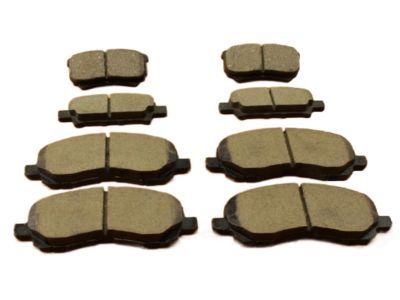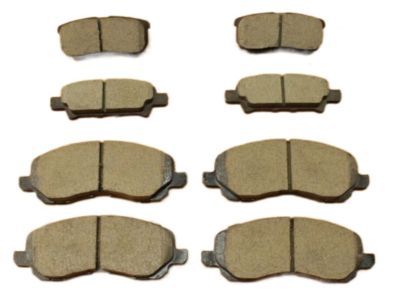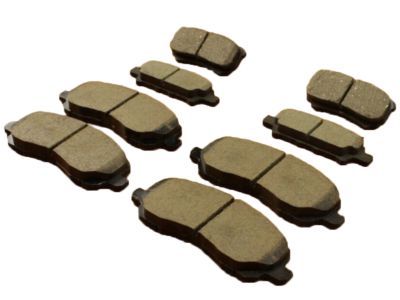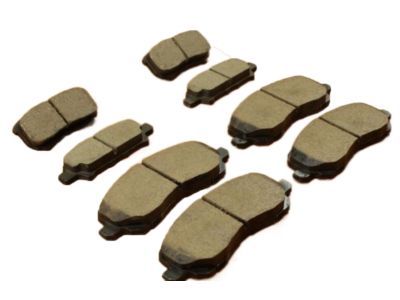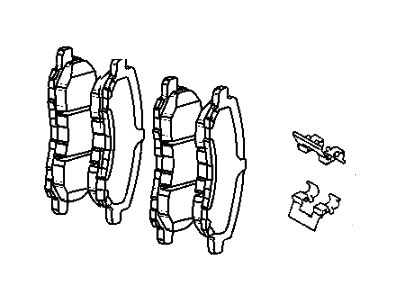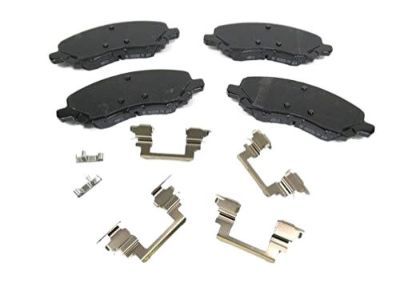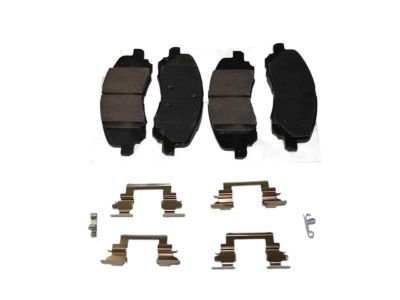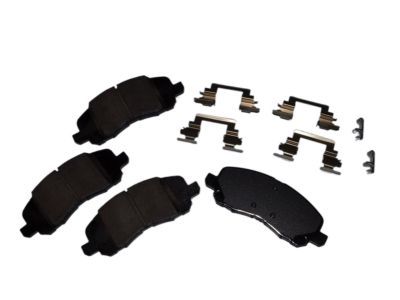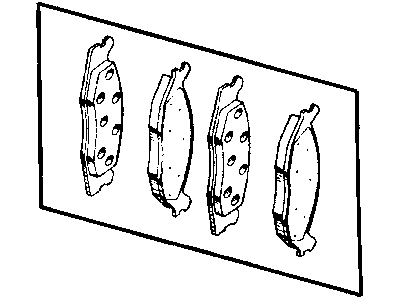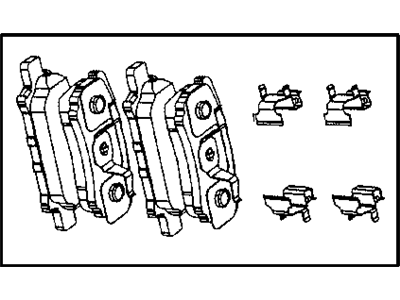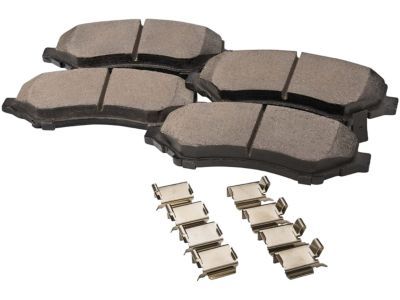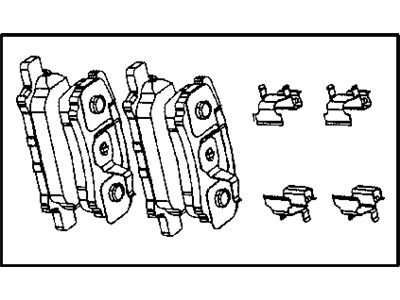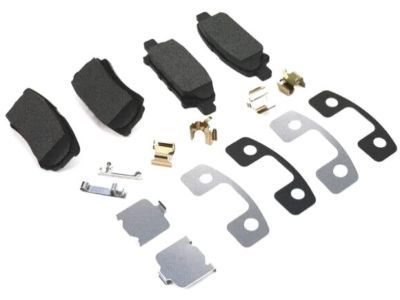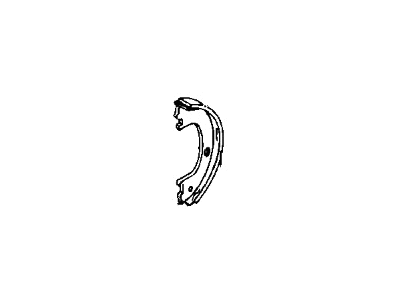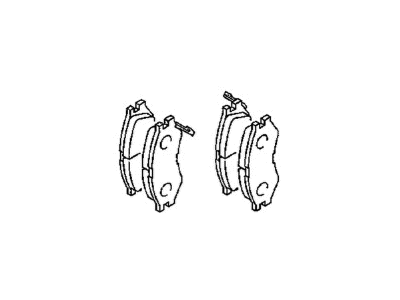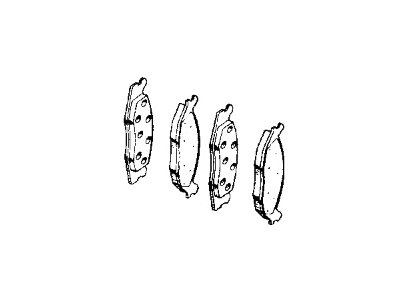
My Garage
My Account
Cart
Genuine Chrysler Sebring Brake Pad
Disc Brake Pad Set- Select Vehicle by Model
- Select Vehicle by VIN
Select Vehicle by Model
orMake
Model
Year
Select Vehicle by VIN
For the most accurate results, select vehicle by your VIN (Vehicle Identification Number).
64 Brake Pads found

Chrysler Sebring Front Disc Brake Pad Set
Part Number: 2AMV3494AA$49.19 MSRP: $106.00You Save: $56.81 (54%)
Chrysler Sebring Front Disc Brake Pad Kit
Part Number: 68020494AB$67.67 MSRP: $101.00You Save: $33.33 (33%)
Chrysler Sebring Disc Brake Pad Set
Part Number: 68020494AA$67.67 MSRP: $101.00You Save: $33.33 (33%)
Chrysler Sebring Rear Disc Brake Pad Kit
Part Number: 68028671AA$150.75 MSRP: $226.00You Save: $75.25 (34%)
Chrysler Sebring Rear Disc Brake Pad Kit
Part Number: 2AMV4271AA$47.77 MSRP: $68.35You Save: $20.58 (31%)
Chrysler Sebring Rear Disc Brake Pad Kit
Part Number: 5191271AC$61.60 MSRP: $156.00You Save: $94.40 (61%)
Chrysler Sebring Front Disc Brake Pad
Part Number: 2AMV3494AB$49.19 MSRP: $106.00You Save: $56.81 (54%)Chrysler Sebring Disc Brake Pad Set, Rear
Part Number: 5083071AA$61.09 MSRP: $157.00You Save: $95.91 (62%)Chrysler Sebring Front Disc Brake Pad Kit
Part Number: V1012926AB$52.08 MSRP: $74.55You Save: $22.47 (31%)Chrysler Sebring Rear Disc Brake Pad
Part Number: V2013767AB$54.84 MSRP: $72.20You Save: $17.36 (25%)Chrysler Sebring Front Disc Brake Pad Kit
Part Number: 5191231AA$67.67 MSRP: $101.00You Save: $33.33 (33%)Chrysler Sebring Rear Disc Brake Pad
Part Number: 5114424AA$61.09 MSRP: $157.00You Save: $95.91 (62%)Chrysler Sebring Pad Kit Rear Disc Brake
Part Number: 5191271AA$61.60 MSRP: $156.00You Save: $94.40 (61%)Chrysler Sebring Front Disc Brake Pad Kit
Part Number: V1010494AA$49.19 MSRP: $106.00You Save: $56.81 (54%)Chrysler Sebring Rear Disc Brake Pad Kit
Part Number: 68020256AA$150.75 MSRP: $226.00You Save: $75.25 (34%)Chrysler Sebring Front Disc Brake Pad Kit
Part Number: V1013540AB$28.31 MSRP: $40.50You Save: $12.19 (31%)Chrysler Sebring Front Disc Brake Pad Kit
Part Number: V1015576AA$49.19 MSRP: $106.00You Save: $56.81 (54%)
| Page 1 of 4 |Next >
1-20 of 64 Results
Chrysler Sebring Brake Pad
Chrysler Sebring cars employ brake Pad as the primary attributes of the braking system, which by friction, utilize energy to heat it and then slow the vehicle down. Conventional Brake Pad, mainly incorporate a friction material to a metal base plate and they are usually replaced periodically because of wear and tear. Several Sebring models have wear sensors or indicators to let the driver know when the pads are nearly worn to the bare metal. The Chrysler Sebring cars have used different sorts of brakes pads over time such include the non metallic, the metallic and the ceramic brake pads. As such, each type has its benefits in relation to the amount of friction, wear ability, and amount of noise present. Furthermore, proper installation of additional parts like, clips and shims it symbolizes good results and durability of the brake pads in question because they reduce noise and wear evenly. It should be noted that servicing of brakes is somehow frequent and it is recommended to be done every 50000 miles.
Looking for affordable and high-quality auto parts? Then you have already arrived at the proper online shop. We offer all Chrysler Sebring Brake Pad at great affordable prices. Moreover, all genuine Chrysler Sebring Brake Pad come with a manufacturer's warranty. In the long run, you would realize you have saved a lot of trouble and money with OEM parts from here.
Chrysler Sebring Brake Pad Parts Questions & Experts Answers
- Q: How to Replace the Brake Pad on Chrysler Sebring?A:When working on the brake assembly, do not depress the brake pedal with the caliper removed. To begin, remove about two-thirds of the brake fluid from the master cylinder reservoir using a syringe, and be cautious as brake fluid can damage paint. Loosen the wheel lug nuts, raise the vehicle, and support it securely on jackstands, then remove the wheels. Work on one brake assembly at a time. For the front brakes, position a drain pan, clean the caliper area with brake system cleaner, and push the piston back into its bore using a C-clamp while being mindful of the fluid level in the master cylinder. Replace the brake pads by removing the caliper, inner and outer pads, and support plates, and inspect the caliper, Brake Disc, and hoses. Clean and inspect the guide pin bolts before installing the caliper and tighten them to the torque. Repeat the process for the rear brakes, compressing the piston with a C-clamp, replacing the pads, and inspecting the caliper, brake disc, and hoses. Finally, add brake fluid, pump the brake pedal, and check the brake operation before putting the vehicle into normal service.
